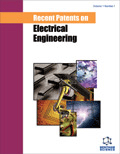Abstract
Transmission media in the communications system may be unbounded such as free space or bounded. The bounded transmission media include waveguides, optical fiber cables, and transmission lines. Transmission lines are made from two or more conductors separated by a dielectric material and they can transmit signals in a wide range of frequencies including DC signals. However, beyond certain frequencies, the transmission lines become inefficient in the transmission of electromagnetic power. This chapter focuses on the transmission lines and their characteristics in the frequency domain. The per unit line parameters and characteristics for some widely used transmission lines, such as coaxial cables, parallel wires lines, parallel plates lines, and micro-strip lines, are presented. The detailed discussion on reflection coefficient and voltage standing wave for terminated transmission lines is also presented. Applications of Smith chart in transmission lines calculations is covered at the end of the chapter. The topics of the chapter are analyzed in details and supported by illustrative examples and figures in addition to solved problems. Homework problems are included at the end of the chapter.
Keywords: Characteristic impedance, coaxial cables, lossless line, microstrip lines, matched line, parallel plates lines, parallel wires lines, reflection coefficient, quarter-wave transformer, Smith chart, stub matching, transmission coefficient, twisted pair lines, voltage standing wave ratio.




















